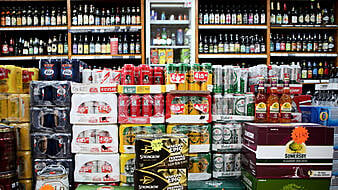Young people attending a specialist addiction treatment centre run by the HSE in Dublin have reported an increasing trend of youth gangs who bully, threaten and intimidate other teenagers.
The latest annual report of the HSE’s Adolescent Addiction Service said the prevalence of such youth gangs which involved both males and females was “an emerging and worrying feature” of youth activity in some communities.
The report claimed service users reporting gang members would force other young people to kiss their shoes or the ground in order to let them pass or pull hats off their head or urinate on them.
It said some gangs were also challenging adults including gardaí.
The service, which celebrated its 25th anniversary last year, provides support and treatment for addiction issues to young people and their families from parts of west Dublin including Ballyfermot, Clondalkin, Palmerston, Lucan and Inchicore.
The report shows 65 per cent of young people attending the service last year came from families where there is some history of alcohol or drug abuse – up from 42 per cent the previous year.
The report also recorded a 10 per cent increase in the number of young people referred to the service for treatment for alcohol and drug abuse during 2022.
A total of 53 young people and their families received treatment from the service last year, while it also worked with concerned individuals in relation to two other teenagers who did not attend the service – an increase of five over 2021 levels.
The average age of adolescents attending the centre was 15 years with participants ranging in age from 13 to 18.
More than three-quarters of those using the service were male, while 7 per cent were non-nationals.
Cannabis
In addition, the parents of 44 per cent of young people attending treatment from the service last year were separated compared to 28 per cent in 2021.
The overwhelming majority of cases involve cannabis with the drug being used by 98 per cent of teenagers receiving treatment.
The report found that adolescents had been taking drugs for an average of 17 months before they were referred to the service.
It noted that there is “increased tolerance for cannabis use at a societal level” with the drug available in many formats including vapes and edibles.
The proportion of young people drinking alcohol last year was 35 per cent – down from 54 per cent in 2021.
There was also a reduction in the number of teenagers using cocaine – down to 9 per cent in 2022 from 16 per cent the previous year.
However, the HSE reported almost a three-fold increase in the proportion taking nitrous oxide with 22 per cent admitting taking the substance which is also known as “laughing gas” last year.

The report said almost 7 in 10 teenagers attending the service had a history of contact with the HSE’s Child & Adolescent Mental Health Service which reflected the extent to which young people using drugs and alcohol experienced mental health issues.
Among issues reported were attention deficit disorder, obsessive compulsive disorder, self-harm, suicide ideation, depression, anorexia and anxiety.
The report said the problems were compounded by the closure of schools and other services due to Covid-19 restrictions.
It claimed issues with some teenagers included absconding and indebtedness as well as holding, distributing or dealing drugs.







